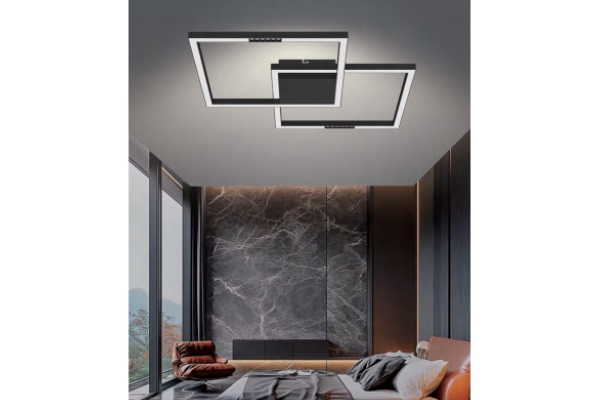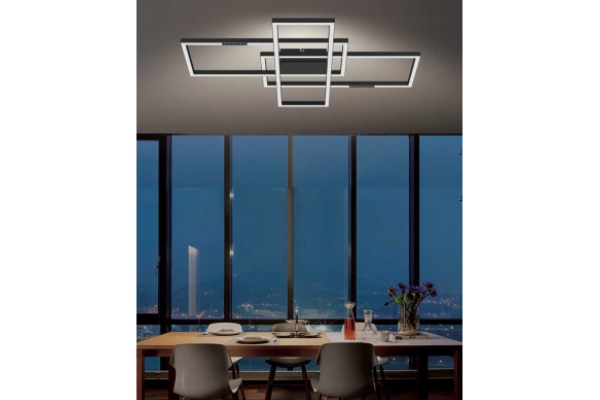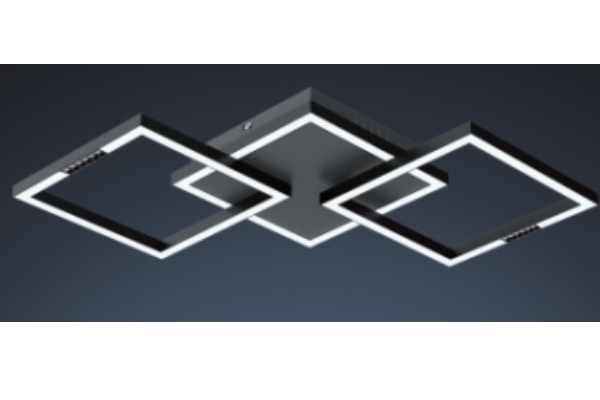How does the low-temperature luminescence characteristic of LED table lamps prevent the risk of burns caused by overheating of the lamp body during use?
Release Time : 2025-09-01
LED table lamps are commonly used for daily lighting in learning and office settings. When used, they often require close proximity to the lamp body. Children, the elderly, or careless operators are particularly vulnerable to accidentally touching the lamp head or lampshade. Overheating can cause burns. The low-temperature emission characteristics of LED table lamps do not simply mean "no heat." Rather, they achieve this by synergizing the light source's energy conversion efficiency with heat dissipation design to keep the lamp surface temperature within a safe range, reducing heat accumulation at the source. Combined with protective materials and structural design, these lamps comprehensively mitigate burn risks during use, providing peace of mind for all users.
The low-temperature emission characteristics of LED table lamps stem primarily from their unique energy conversion mechanism, which significantly reduces heat generation compared to traditional light sources. Traditional incandescent and halogen lamps have extremely low energy conversion efficiency, converting most of the electrical energy into heat rather than light. For example, in incandescent lamps, only 5%-10% of the electrical energy is used for light generation; the remainder is dissipated as heat. This causes the lamp surface temperature to rise rapidly, reaching hundreds of degrees Celsius after prolonged use, making accidental contact highly susceptible to burns. LED light sources, on the other hand, utilize the principle of semiconductor light emission, directly converting electrical energy into light energy with an energy conversion efficiency exceeding 80%. Only a small amount of electrical energy is converted into heat, and this heat is concentrated in the LED chip rather than on the lamp body. This "high light, low heat" characteristic ensures that the temperature of the LED table lamp body (especially the easily accessible areas such as the lampshade and arm) remains consistently low when the lamp is emitting light. Even after hours of continuous use, the surface remains only slightly warm, far below the threshold that would cause burns, fundamentally reducing the risk of heat damage.
The LED table lamp's heat dissipation structure further enhances the anti-scalding effect of its low-temperature emission characteristics and prevents localized heat accumulation. Although LED light sources generate relatively little heat, they still generate trace amounts of heat over extended periods of operation. If this heat cannot be dissipated promptly, it can cause localized temperature increases near the LED chip, which can then be transferred to the lamp body surface. To this end, LED table lamps feature specially designed heat dissipation systems. For example, the LED base is made of a high-thermal-conductivity aluminum alloy to quickly transfer heat generated by the chip to the exterior. Heat dissipation fins are installed inside the lamp base to increase the contact area with the air and accelerate heat dissipation. Some table lamps also incorporate thermal insulation gaskets between the heat dissipation components and the outer casing to prevent heat transfer to easily accessible areas. These heat dissipation designs quickly dissipate trace amounts of heat, preventing hot spots from forming within the lamp body and ensuring a uniform and safe surface temperature. Even if users accidentally touch the edge of the lamp base or the heat dissipation components, they won't feel a noticeable burning sensation, effectively minimizing the risk of localized burns.
The materials used for high-touch areas of LED table lamps, combined with their low-temperature emission characteristics, provide a "double layer of protection" to further reduce the risk of burns. Highly accessible areas of the lamp body (such as the lampshade, arm, and base edge) are often constructed from high-temperature-resistant and heat-insulating materials, such as flame-retardant ABS engineering plastic, silicone anti-slip coating, and frosted acrylic. These materials inherently have poor thermal conductivity. Even if the internal heat sink components reach a certain temperature, they effectively block heat transfer, keeping the outer shell temperature below the human body's tolerance level. (Typically, human skin can experience a burning sensation when exposed to temperatures above 45°C, while LED table lamps typically maintain an outer shell temperature of 30°C-40°C.) For example, a silicone-coated lamp arm is not only soft to the touch, but also uses the material's inherent thermal insulation to prevent heat from internal wiring or heat sink components from transferring to the outer surface. A frosted acrylic lampshade diffuses light while isolating the trace heat near the lamp beads, eliminating the risk of burns when cleaning the shade or adjusting the angle.
Adapting to specific user scenarios for children and the elderly, the low-temperature emission characteristics of LED table lamps also reduce the risk of burns from accidental contact. Children may curiously touch the lamp body or even place toys near the lamp head. Elderly people, due to poor eyesight or slow movements, may accidentally touch hot parts. Low-temperature emission fundamentally eliminates these risks. For example, LED table lamps designed specifically for children's desks only feel a mild temperature, preventing redness, pain, or other burn symptoms, even if a child places their hand under the lampshade or on the arm. Elderly LED table lamps feature a rounded base and arm joint to prevent bumps. Their low-temperature properties also eliminate the need for them to carefully adjust the height of the lamp to avoid high-temperature areas. This scenario-based safety design elevates the low-temperature emission characteristic not only as a technical advantage but also as a practical safety guarantee, catering to the needs of diverse users.
The low-temperature emission characteristic of LED table lamps also protects surrounding items from the effects of high temperatures, indirectly reducing the risk of secondary burns caused by overheating. When using traditional high-temperature desk lamps for extended periods, placing items such as paper, fabric, or plastic stationery near the lamp can cause the heat to deform, burn, or even cause a fire. Accidentally touching these overheated items can also cause burns. Because LED table lamps emit light at a low temperature, they avoid creating a high-temperature environment around the lamp body. Even if books or notebooks are placed close to the lamp, the paper won't curl, the plastic pen casing won't soften, and users won't be burned by overheating. This low impact on the surrounding environment eliminates the need for a specific safety distance when using the LED table lamp, saving desk space and reducing the risk of burns from indirect overheating.
From a safety design perspective, the low-temperature emission characteristics of LED table lamps embody an "active protection" approach. Unlike traditional desk lamps that rely on "warning signs" or "user caution" to prevent burns, the low-temperature emission characteristic reduces heat generation at the source and then enhances protection through heat dissipation and material design, making safety an inherent feature of the product. This design not only improves the safety of LED table lamps but also reduces user concerns. It is particularly suitable for crowded and frequently used environments such as homes, schools, and offices. Whether your arm accidentally rests on the lamp arm during daily office work, or your child accidentally touches the lamp body while playing, the low-temperature luminous characteristics of the LED table lamp can provide reliable safety protection, making the lighting both bright and safe, truly achieving a balance between "practicality and safety".







